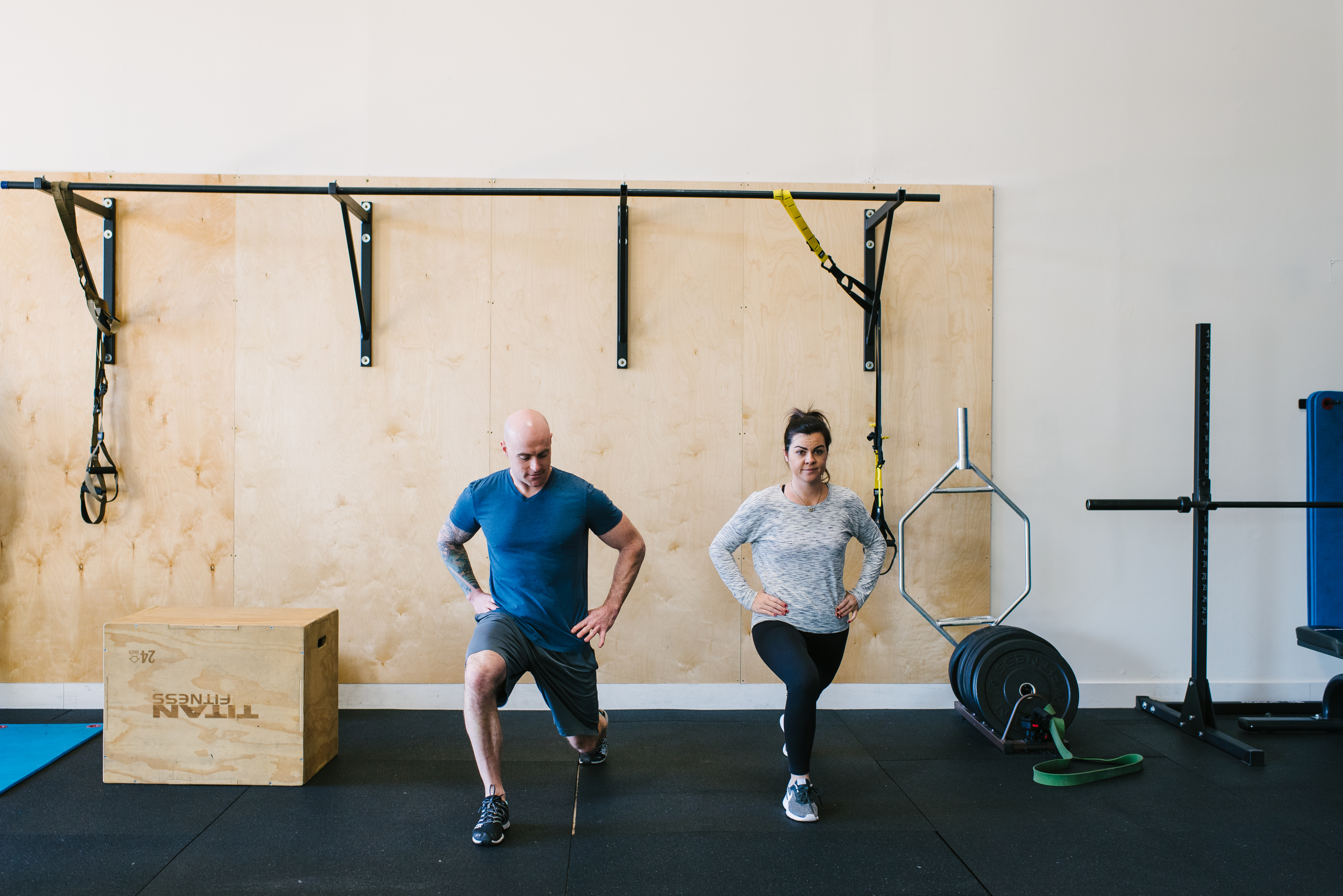Our veteran client, Freddy, was beginning his weekly exercise routine. He expressed his back was feeling tight. He immediately knelt with his back facing an exercise bench. Putting one foot on the bench and the other foot positioned in front of him as if he were genuflecting in a position meant to stretch his quadriceps and abdominal muscles, Freddy explained, “The chiropractor tells me if my lower back is tight, then my hip flexor muscles must be tight.” Impressed by his knowledge of the anatomy of his hips and back, Freddy had successfully troubleshooted how to alleviate pain in his low back outside of my exercise instruction. Focusing on the well-being of our hip flexor muscles is a great solution to alleviate common lower back symptoms in which our society struggles with on a daily basis. Good job Freddy. The chiropractor gets a gold star as well.
The hips connect to the spine in a fashion which allow the hips to tilt forward and backward. This motion of rolling the crest of the hips forward and backward is called an anterior and posterior pelvic tilt. Imagine the crest of the hips rolling toward the belly button and shortening the space between the crest of the hips and the ribs. This is a posterior pelvic tilt because the pelvis is rolling toward the back of the body. In contrast, visualize the tail bone lifting and the crest of the hips on the front of the body rolling forward, opening the up the abdomen and creating an arch in the lower back. This motion makes the body look like the shape of Donald Duck’s body, where the buttocks protrudes backwards and a pronounced arch in the lower back appears. This is called an anterior pelvic tilt because the crests of the hips are rolling to the front of the body. These motions are noteworthy to focus on because the overuse and underuse of these movements cause imbalance to the structural integrity of the spine and hips.
During a hyper posteriorly tilted hip scenario, the vertebrae of the lumber spine are pulled forward as the crest of the hips roll toward the ribs in the front of the body. As the crests of the hips roll toward the navel, the hip flexor muscles originating from the higher part of the femur, attaching to the ventral portion of the spine, shorten. This causes the lower back to round and the torso to collapse forward, making the body look like the hunched over Mr. Burns from The Simpsons. The intricate pathways of the nerves budding through the spine are at the threat of becoming impinged, causing neuropathy, pain, and lack of mobility. Overuse from sitting hours in a desk, commuting in a car, or flying in a plane are common causes to this type of underuse injury. This sedentary type of environment can simultaneously contribute to the underuse and deconditioning of the core, hip flexors, and paraspinal muscles. The body’s malleable features have similarities to the properties of porcelain during its molding and curing process. If we stay in in shape, where our hips are posteriorly tilted and our lower spine becomes rounded over a prolonged period of time, our bodies remain in that shape when we stand up.
To counteract this effect of tight hip flexors and abdominal muscles, the simplest solution we utilize is to prescribe exercises reversing the actions that have produced this situation. First, the best way to cure tight hips is to simply stand up more often. The hips aren’t bent at ninety degrees when standing. Therefore, standing up lengthens the hip flexors and deep abdominal muscles. This also tells the paraspinal muscles to activate during standing as opposed to their dormant state during sitting where the seat and back rest replace the function of paraspinal and the vertical abdominal muscles.
Strengthening the hip flexors, like our friend Freddy, is important. However, mobility of the pelvis is an equal, if not more, effective solution to prevent future low back injuries. People who have experienced lower back pain have probably made a visit to one of Napa’s great physical therapists. If anyone has paid a visit to the physical therapy office, they have more than likely been instructed to perform anterior and posterior pelvic tilts to decrease lower back pain.
To perform pelvic tilts, start from a standing position. Place your index fingers on both of the crest of your hips located in the front of your body. Roll the crest of the hips forward in a slow and controlled motion until a brief sensation in the abdominal muscles is felt. You may even feel a slight stretch in the lower back. After that movement has been completed, roll the hips in the opposite direction, feeling a slight exertive sensation the paraspinal muscles. Use caution as to avoid crunching the back to where this movement causes pain. Keep in mind, these pelvic tilts are meant to mobilize the hips to avoid stiffness in the lower back and hips. Perform five to ten repetitions daily at a ten percent perceived exertion of maximal intensity to help loosen up the hips and lower back.
Instructing patients how to perform a posterior and anterior pelvic tilt is like the first chapter in a Physical Therapy 101 course. Therefore, it’s critically important to work to maintain the hips in a neutral position. We love our physical therapists in our community. Let’s continue to support them but not making too many visits to their offices for a lower back injury we might be able to avoid altogether with some adherence to exercise.
Sean McCawley, the founder and owner of Napa Tenacious Fitness in Napa, CA, welcomes questions and comments. Reach him at 707-287-2727, napatenacious@gmail.com or visit the website napatenaciousfitness.com.

